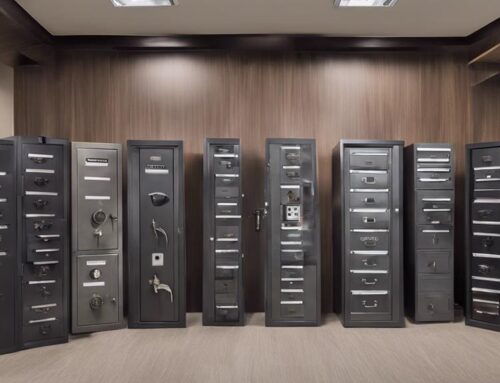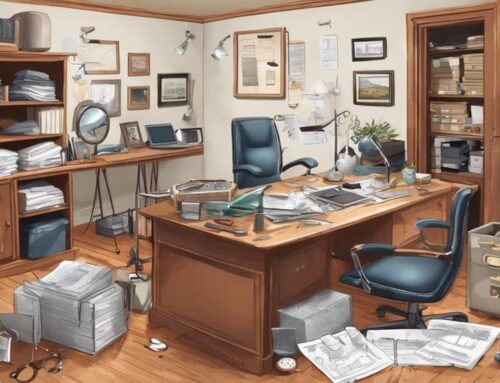When purchasing your first safe, stick to the 10% Rule, guaranteeing you’re not underspending on protection. Sturdy construction with thick steel is your best bet for enhanced security; it deters thieves by its sheer weight. Make certain the door fits tightly, minimizing gaps that could compromise security. Anchor your safe deeply into a sturdy structure for immovability. Manage interior humidity with a dehumidifier to protect your valuables. Choose between manual, electronic, and biometric locks based on your convenience and needs. Evaluate what you’re storing to ensure the size and features match your requirements. Remember, integrating your safe with a broader security strategy maximizes protection. Uncovering these aspects further will equip you with the knowledge to make an informed decision.
Key Takeaways
- Prioritize heavy construction and thick steel for enhanced security and deterrence against theft.
- Opt for a fireproof safe to ensure dual protection for your valuables.
- Choose a locking mechanism (manual, electronic, biometric) that suits your ease of use and security needs.
- Securely anchor your safe to prevent removal and increase immovability.
- Manage humidity inside the safe with dehumidifiers or silica gel packs to protect items from damage.
Follow the 10% Rule
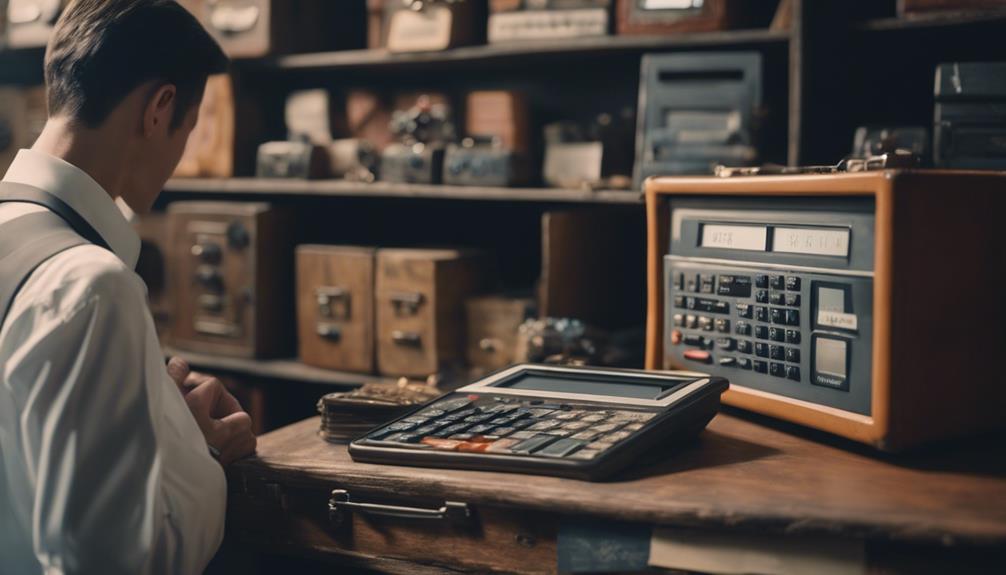
Adhering to the 10% Rule demands investing approximately 10% of your valuables’ worth into a secure safe, guaranteeing a balanced expenditure for optimal protection. This principle guides you towards allocating a reasonable budget, making the acquisition of a safe not just an expense but a prudent investment in security. It’s essential in establishing a baseline for the level of protection your valuables genuinely require. When considering this, a fireproof safe often emerges as the best choice.
Fireproof safes provide an added layer of security, safeguarding against both theft and fire damage. This dual protection is crucial for irreplaceable items, such as important documents, jewelry, or even digital media. Following the 10% Rule, you’re not just purchasing a safe; you’re investing in peace of mind. By selecting a safe that aligns with this guideline, you ensure that you’re not overspending, yet you’re acquiring a product that offers sufficient protection.
Prioritize Heavy Construction
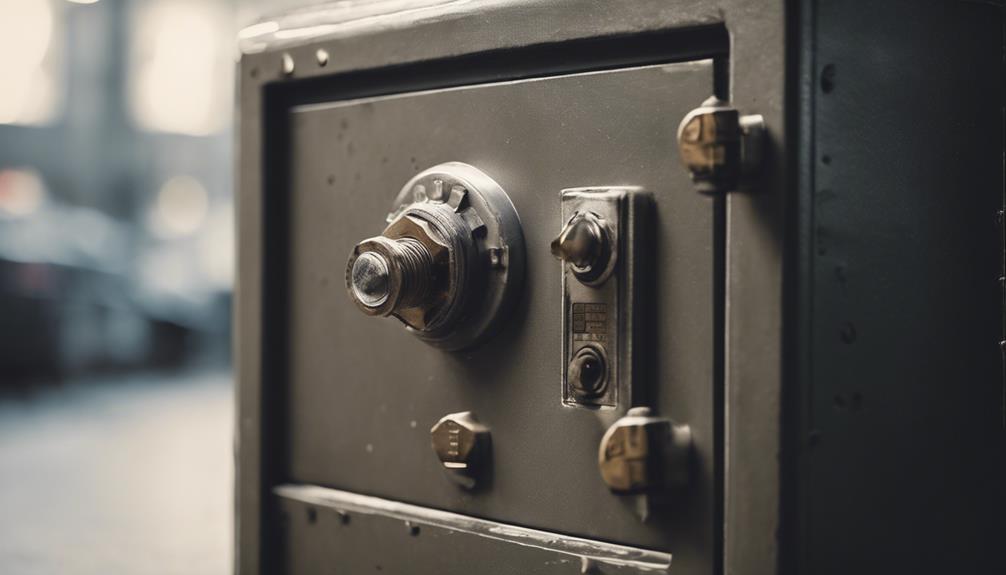
When considering the purchase of a safe, it’s crucial to prioritize robust construction, as this feature significantly enhances the unit’s security and resistance to physical attacks. A heavy safe, with its thick steel and additional reinforcement, serves as a formidable barrier between your valuables and potential thieves. It’s not just about owning a safe; it’s about having the best protection possible.
As you explore further into the technical specifics, understand that the weight of a safe is a direct indicator of its security level. Thieves are naturally discouraged by heavier safes, not only because of their strong construction but also due to the sheer difficulty in moving them quickly during a break-in. This aspect of heavy construction offers an additional layer of protection against physical attacks and unauthorized access, ensuring that your valuables remain secure.
Investing in a heavy safe is a wise choice that yields benefits in long-term security and peace of mind. Remember, it’s not just about preventing theft; it’s about ensuring that, regardless of the circumstances, your valuables are protected to the highest degree possible. Prioritize strong construction in your safe selection to guarantee the best protection for your possessions.
Ensure Tight Door Fit
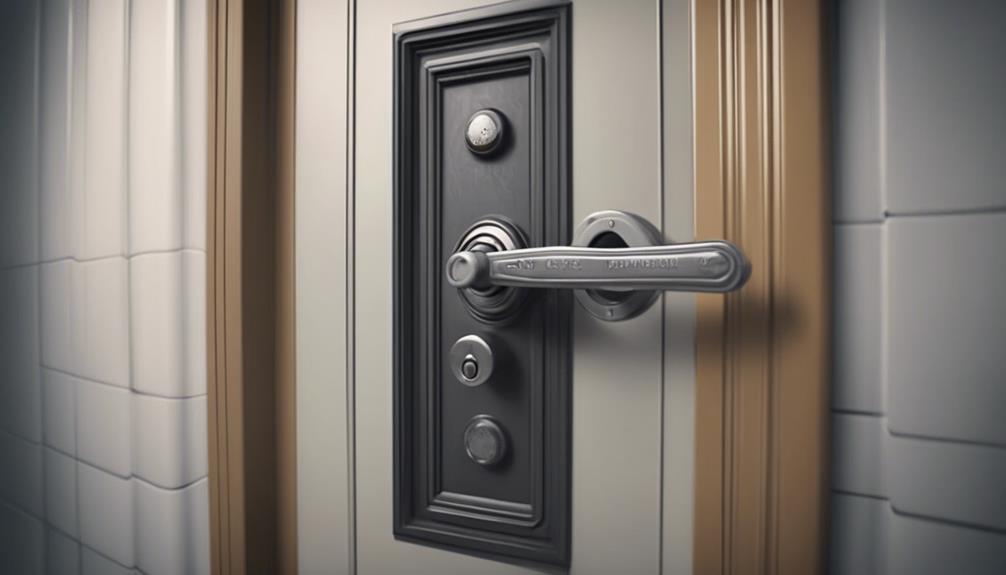
For essential protection, it’s crucial to guarantee your safe features a snug door-to-body fit, minimizing any gaps that could be exploited by thieves. A tight door fit is not merely a detail; it’s a critical defense mechanism against forced entry, enhancing the security of your valuables. When engaging in safe buying, prioritize this feature to make sure that prying tools find no leverage, keeping your door locks and the contents within secure.
Moreover, fire-resistant safes benefit greatly from a tight door fit. This design minimizes the entry of smoke, soot, or water during a fire, preserving the condition of your valuable possessions. It’s a detail that underscores the importance of scrutinizing the safe’s construction quality. A well-fitted door is a hallmark of a superior safe, indicating a robust and reliable design that thieves cannot easily compromise.
Securely Anchor Your Safe
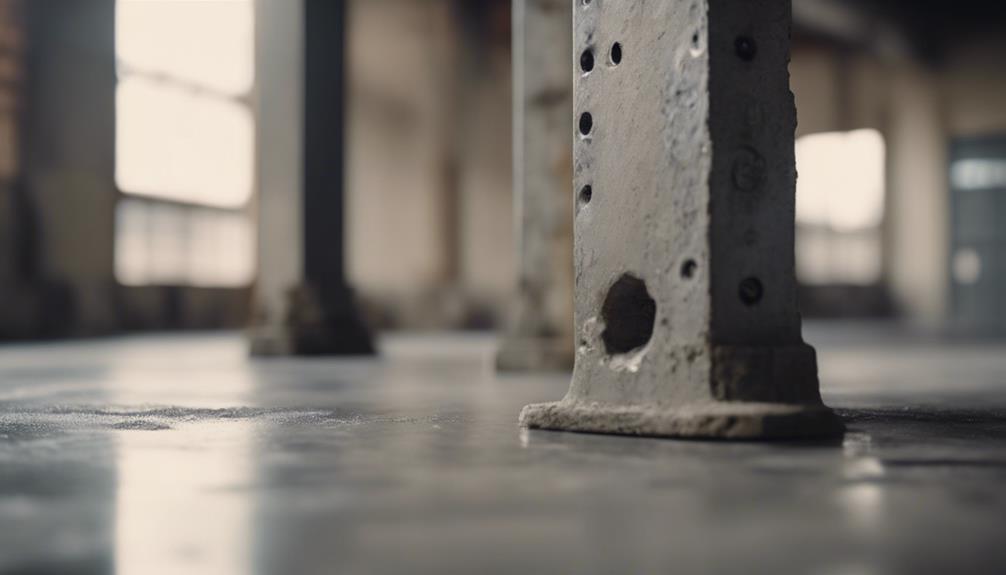
To greatly enhance your safe’s security, it’s crucial to anchor it securely into sturdy structures, like wooden joists, during the installation process. As a first-time safe buyer, understanding the importance of anchoring cannot be overstated. This step adds a crucial layer of security by greatly limiting the ability of thieves to relocate your safe. When anchoring, always choose robust materials and hardware that complement the safe’s built integrity, enhancing its resistance to forced removal.
For top-notch security, it’s advisable to utilize an anchor plate when available, as it offers versatility and increases the anchoring points, making your safe even more immovable. Make sure the anchoring bolts penetrate deep into the wooden joists or concrete floors, as this depth is paramount for achieving a secure hold. It’s not just about preventing theft; it’s about creating a sense of belonging to a community that values security and peace of mind.
Manage Humidity Levels
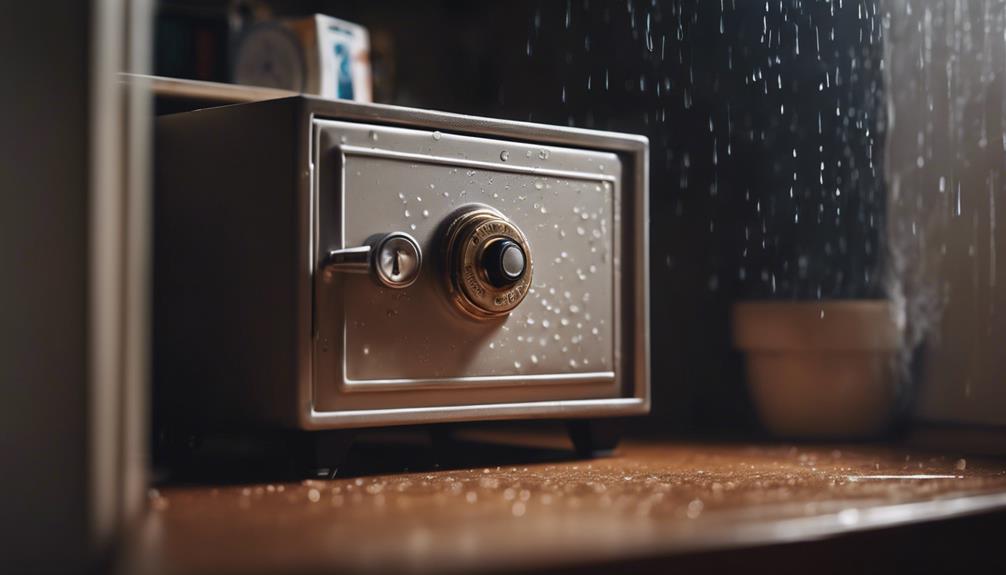
After ensuring your safe is securely anchored, it’s equally important to address humidity levels inside it to protect your valuables from moisture damage. High humidity can wreak havoc on sensitive items such as electronics, documents, and currency, leading to irreversible damage and loss of value. Here are some expert tips for first-time safe buyers on managing humidity levels within safes.
Investing in a dehumidifier is an essential step in safeguarding your belongings against humidity. Depending on the size of your safe and the climate of your location, the type of dehumidifier will vary. For smaller safes or less humid areas, silica gel packs might suffice. However, for larger safes or regions with higher humidity, an electric dehumidifier is more effective.
Moreover, it’s crucial to regularly monitor the humidity level inside your safe. Some safes come with built-in hygrometers for this purpose. If yours doesn’t, consider purchasing a separate hygrometer to keep track of moisture levels.
Evaluate Lock Options
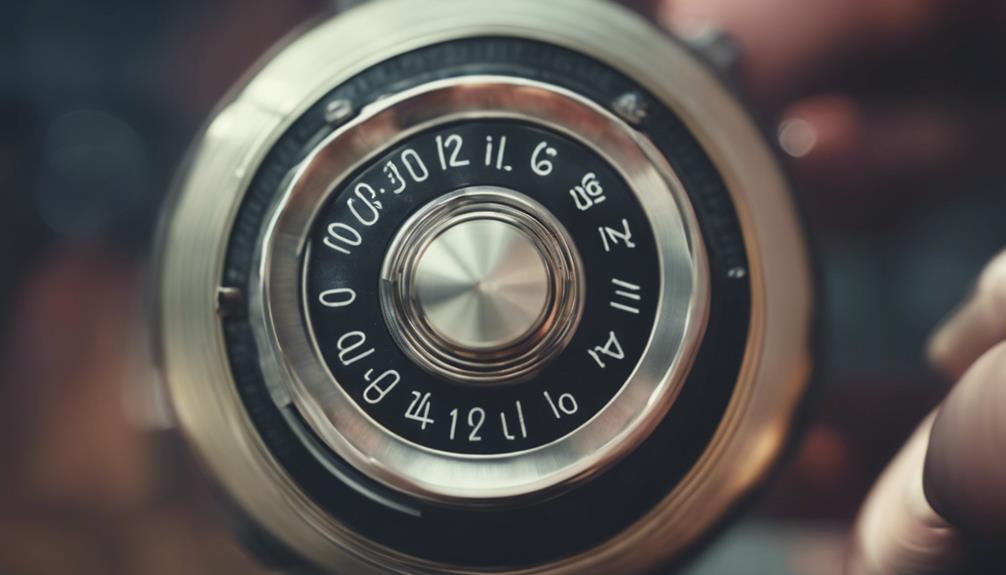
When selecting a lock for your safe, it’s important to weigh the benefits and drawbacks of manual dial, electronic, and biometric options to meet your specific security needs. Manual dials, known for their reliability and durability, don’t require batteries, ensuring continuous access. However, they demand more time to open compared to their counterparts, which might be a critical factor during urgent situations.
Electronic locks offer the convenience of quick access with just a few keystrokes. Yet, their reliance on batteries means you must stay vigilant about power levels, and they’re potentially vulnerable to savvy hackers. It’s essential to assess whether the convenience aligns with your risk tolerance and the value of what you’re protecting.
Biometric locks elevate security by utilizing fingerprint recognition, granting access solely to those you’ve authorized. This personalized security feature minimizes the risk of unauthorized access, providing a blend of convenience and high-level protection. Nonetheless, consider the technology’s reliability and your comfort with its operation.
Choosing between an electronic lock, manual dial, or biometric system involves balancing ease of use, security, and the specific needs of your valuables. Your decision should reflect not just your lifestyle but the utmost protection for your possessions.
Understand Safe Types
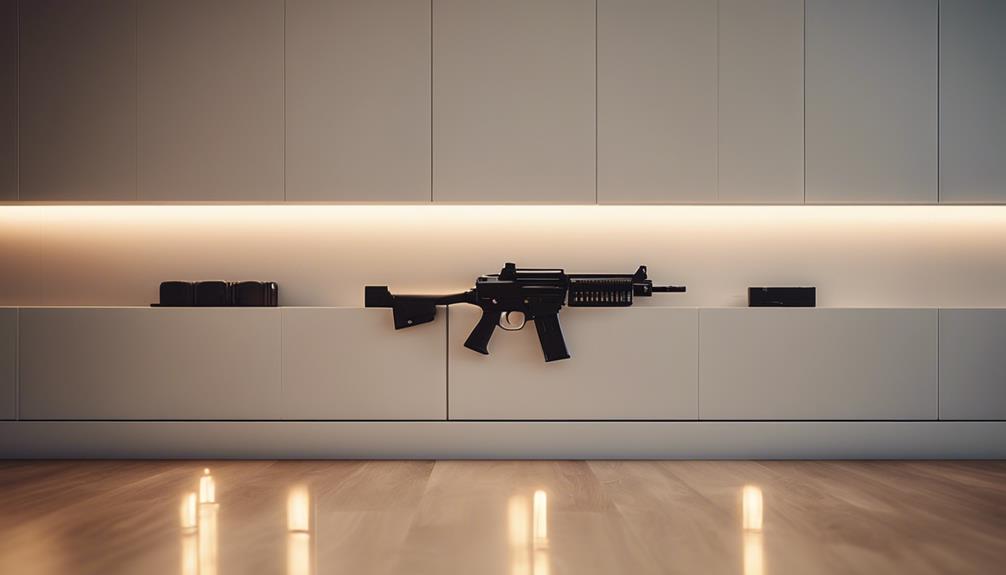
Understanding the various types of safes is key to matching your security needs with the right model. Each type of safe offers distinct features and protections, tailored to secure specific valuables under different circumstances. Digital home safes, for instance, are ideal for safeguarding important documents and small valuable items within a residential setting, providing a blend of convenience and security.
Jewelry safes stand out as the best option for those with valuable ornaments, designed specifically to protect against theft and damage. Their specialized compartments and robust security features guarantee your precious items remain secure and organized.
For those prioritizing quick and secure access, fingerprint safe boxes utilize biometric technology, offering an added layer of protection. This type of safe ensures that only authorized individuals can access the contents, making it a smart choice for both homes and businesses.
Gun safes, however, are essential for firearm owners. They not only keep guns out of the wrong hands but also ensure compliance with legal requirements for firearm storage. The best gun safes combine solid construction with advanced locking mechanisms, providing peace of mind for responsible gun owners.
Choosing the right type of safe means considering what you’re protecting and how you need to access it. Whether it’s documents, jewelry, or firearms, there’s a safe designed to meet your security needs.
Safeguard Your Combination
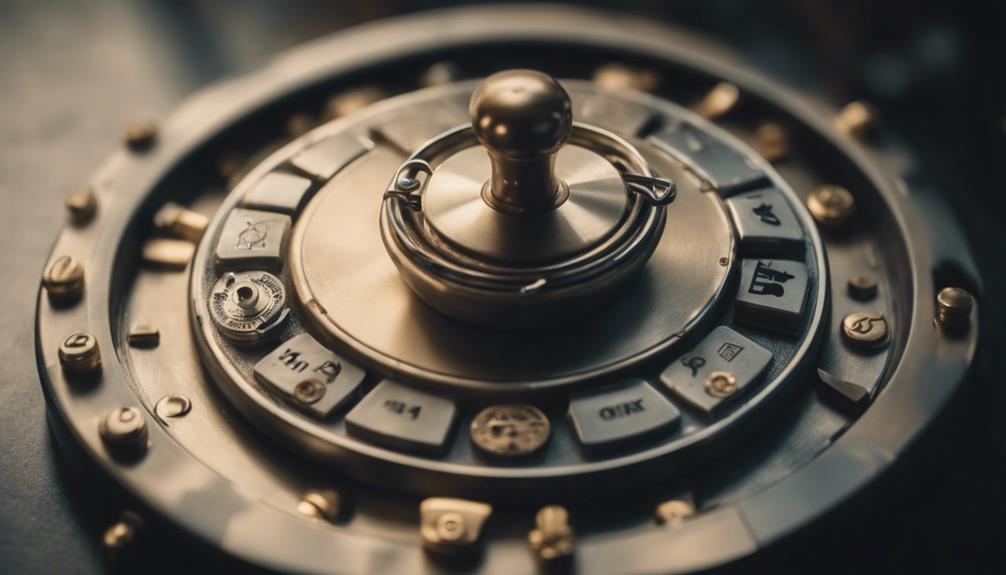
To guarantee the utmost level of security for your valuables, it’s essential that you memorize your safe combination and store it in a place only you can access. Keeping your safe’s security at the forefront means understanding that the combination is the key to safeguarding what matters most. Memorize your safe combination to make certain that, even in the event of electronic failure or physical documentation loss, access to your valuables remains uncompromised.
It’s vital to avoid sharing your safe combination with anyone not explicitly authorized to access its contents. The more individuals who know your combination, the greater the risk of unauthorized access. Remember, trust is paramount, but in matters of security, discretion is your strongest ally.
Change your safe combination periodically for an added layer of protection. This practice prevents the accidental disclosure of your combination from becoming a long-term security risk. Make sure the new combination is both easy for you to remember and complex enough to thwart any attempts at guessing.
Assess Your Storage Needs
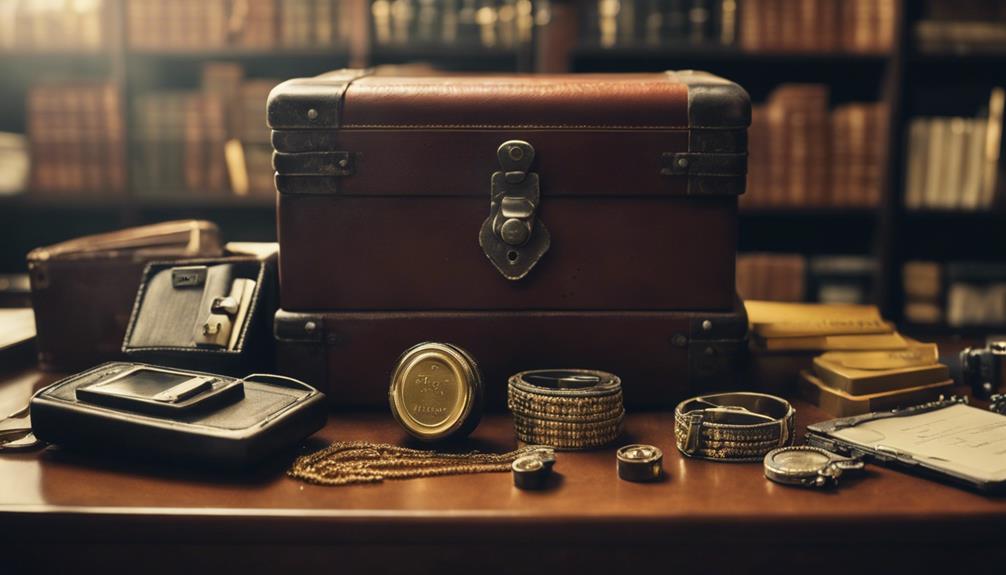
After guaranteeing the security of your combination, it’s important to assess the specific storage requirements for your valuables before selecting a safe. When purchasing a safe, understanding what you need to protect not only steers you towards the right choice but also ensures you belong to the group of individuals who value and safeguard their assets effectively.
Consider the following aspects to align your needs with the perfect safe:
- The quantity and types of items you plan to store. Whether it’s family heirlooms, important paper documents, or electronic media, each requires different protective measures.
- The size and dimensions needed not just for your current items but also for any future additions. This foresight prevents the need for multiple safes down the line.
- Fire rating is vital if you’re storing paper documents or other items susceptible to heat damage. Make sure the safe’s fire rating matches the level of protection you require.
- The value and importance of the items. High-value items not only require a secure safe but one that offers advanced features like humidity control or enhanced fire protection.
Expand Beyond Just the Safe
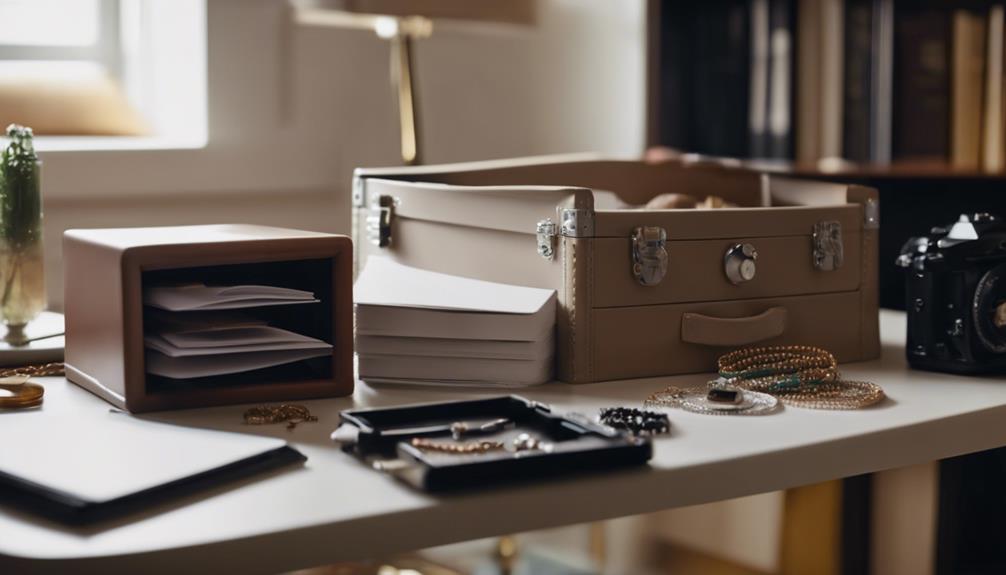
Once you’ve chosen a safe, it’s vital to integrate it into a broader security strategy that includes additional measures and accessories. Consider incorporating alarms, monitoring systems, and safe accessories like dehumidifiers to enhance protection and maintenance. Additionally, understanding your insurance policy’s requirements can guarantee full coverage for your valuables, making it an essential step in safeguarding your investments.
Additional Security Measures
Investing in a high-quality safe is a crucial step, but enhancing your security doesn’t stop there; additional measures such as security cameras, alarms, and motion sensor lights greatly increase protection against potential intruders. When you decide to purchase a safe, consider not just the interior of the safe but also the various types of integrated security systems that can complement its effectiveness.
- Security cameras provide real-time surveillance, making you feel empowered and vigilant.
- Alarms act as a loud deterrent, offering a sense of immediate action against unauthorized access.
- Motion sensor lights shine a spotlight on intruders, creating a sense of exposure and deterrence.
- Access control systems make certain that only you and trusted individuals can reach the safe, promoting a sense of exclusive safeguarding.
Safe Accessories Essentials
To enhance your safe’s functionality and protection levels, consider integrating essential accessories such as dehumidifiers, fire-resistant pouches, and interior lighting.
| Accessory | Purpose |
|---|---|
| Dehumidifiers | Prevents rust and damage to sensitive items by controlling moisture levels inside the safe. |
| Fire-resistant pouches | Offers an extra layer of protection for important documents and valuables, safeguarding them against fire damage. |
| Interior lighting | Improves visibility and access to items, essential in low-light conditions or dark rooms, making it easier to find what you need quickly. |
| Organization tools | Maximizes space utilization and keeps items neatly arranged with adjustable shelves or compartments, including specialized inserts. |
These safe accessories essentials not only protect your valuables more effectively but also ensure greater organization and accessibility.
Insurance Policy Insights
Understanding your insurance policy’s coverage for valuables stored in a safe is crucial for ensuring adequate protection against loss or damage. As you begin safeguarding your precious items, it’s important to have a thorough comprehension of how your insurance policy intersects with your security measures.
- Review your insurance policy meticulously to grasp the specifics of coverage for your stored valuables.
- Guarantee your policy accommodates the unique features of your safe, potentially impacting coverage eligibility.
- Document the contents within your safe meticulously; this accuracy aids in claims processing.
- Proactively communicate with your insurance provider about your safe‘s installation to ensure your valuables’ coverage remains intact.
Embracing these insights will strengthen your sense of security, knowing your treasures are not only physically secure but also financially safeguarded.
Frequently Asked Questions
Is a Fireproof Safe Worth It?
Yes, a fireproof safe is worth it. It offers water resistance, theft protection, and insurance benefits, ensuring your valuables are secure from fire and theft while potentially lowering insurance premiums due to enhanced security.
Is It Worth Having a Safe at Home?
Having a safe at home isn’t just an expense; it’s an investment in peace of mind. Consider safe placement, security features, and installation costs to protect your valuables efficiently. Welcome to secure living.
How Heavy Should a Home Safe Be?
Your home safe should weigh at least 100 pounds for basic theft resistance, considering bolt-down options and location. Heavier safes, between 200-500 pounds, offer increased security, making them harder to move or break into.
What Is a Good Fire Rating for a Safe?
In your quest to shield treasures from flames, aim for a safe with at least a 1-hour fire rating. Higher ratings from trusted agencies offer greater protection levels, ensuring your valuables withstand longer fire durations.
Conclusion
In the labyrinth of security, you’ve now charted a map to safeguard your treasures. By investing wisely, anchoring steadfastly, and sealing against the elements, you’ve fortified your vault. Remember, a hefty, snug-fitting safe isn’t just a metal box; it’s the guardian of your peace of mind. As you turn the key or punch in your code, know that foresight and diligence have woven a steel tapestry of protection. Let your valuables slumber undisturbed, shielded by your judicious choices.

